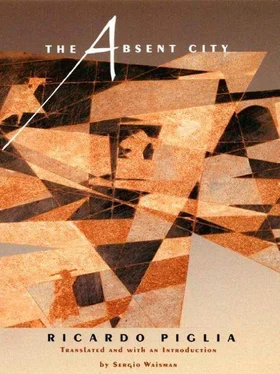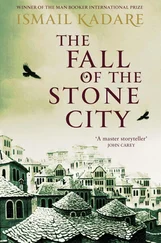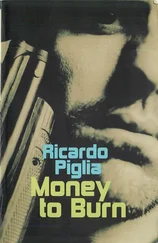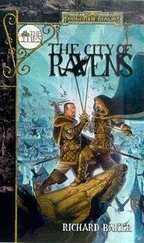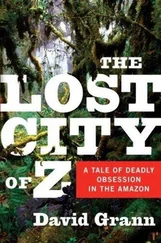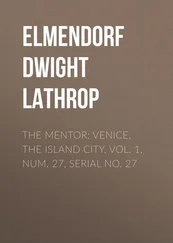Another genre that the reader might recognize is the cyberpunk version of science fiction, reminiscent of the work of William Burroughs. The interwoven stories themselves form a net — of plots, characters, literary and historical references, media of communication — that seems to exist in a virtual reality, especially to the extent that they originate from a machine. A machine that produces stories; an investigation (by Junior, by the reader) that fluctuates between past, present, and future; the possibilities of artificial intelligence and neurosurgery associated with interrogations and surveillance; drug-consciousness manipulation combined with hallucinatory ambiguities — all elements that contribute to the sense of a science fiction narrative.
However, as with the other elements present in The Absent City, there is more than one explanation possible. The zigzagging stories told by a woman in order to seduce and survive also remind the reader of Scheherazade in The Arabian Nights. In other words, they touch on a tradition as old as narrative itself, the drive to tell a story, to hear a story, which speaks of the relationship between desire and story-telling, between narration and the perception of reality.
Macedonio Fernández and James Joyce
The Absent City contains references and allusions to a number of Argentine writers. In The Absent City, as in much of Piglia’s work, there is a project to (re) draw literary genealogies and raise issues associated with accepted canons. An important aspect of a nation’s identity is its literary inheritance and how this heritage is perceived — and constructed — in the present. All writers inherit a past, but, as Jorge Luis Borges might have said, they also create their precursors, by changing the way readers read previous writers through the lens of new ones.
There are also a number of references in The Absent City to works and writers not from Argentina: The Arabian Nights, Dante Alighieri, Fyodor Dostoyevsky, Robert Louis Stevenson, Edgar Allan Poe, Henry James, William Faulkner, James Joyce, and others. Of these, a few words should be said about the role of Joyce in The Absent City. But first, we must consider Macedonio’s place in the novel.
Macedonio Fernández (1874–1952) is one of the most unusual characters in Argentine literary history, much celebrated by Borges and others for his ingenuity, and a key figure in Argentina’s avant-garde movements. He married Elena de Obieta in 1901, with whom he had four children. She died in 1920. His texts include the poem “Elena Bella muerte” (“Elena beautiful death”) (1920) and No todo es Vigilia lo de los Ojos Abiertos ( Not Everything is Wakefulness When our Eyes Are Open) (1928). In 1904 he began writing a lifelong novel, Museo de la Novela de la Eterna ( Museum of the Novel of the Eternal One ). He worked on it for approximately forty-five years, until his death, but never published it. It was finally published posthumously in 1967.
In his writing, often humorous and logically unpredictable, Macedonio puts into play the importance of language in creating meaning and in our conceptions of time and space. But he does so by emptying out traditional linguistic and literary constructions and conventions to demonstrate their arbitrariness and lack of any real existence. The Museo de la Novela de la Eterna, a text that is both a novel and a theory of the novel, has over fifty prologues and characters with names such as Dulce-Persona (Sweet-Person), Quizágenio (Maybegenius), and the No-Existente-Caballero (Non-Existent-Knight).
But this Macedonio Fernández from history is not necessarily the Macedonio that the reader encounters in The Absent City. Readers should not assume that they are reading about Macedonio Fernández at a literal level. The Macedonio in The Absent City is not the man who lived and wrote in Argentina in the first half of the twentieth century, but rather a fictional character named Macedonio.
The origins of this narrative technique — of this inversion between the real and the fictional — in Argentine literature can be traced to Borges, whose texts actively blur the distinctions between genres: between essay and story, between literary criticism and fiction. Piglia’s reworking of this technique is one way in which he dialogues textually with Borges’s works and ideas. For example, the point of departure for Borges’s story “Tlön, Uqbar, Orbius Tertius” is a discovery that Borges (the narrator, also a fictionalized “real” person) tells us is made by his friend Bioy Casares, whom we identify immediately as the Argentine writer, Borges’s lifelong friend and literary collaborator. This is but one example of the kind of contamination between reality and fiction that Borges achieves in his work, a move that allows Borges — and Piglia as well — to interpret reality (including history, politics, and culture) through literature.
The other technique used by Borges is to have imaginary writers (such as Al-Mu’tasim in “An Approach to Al-Mu’tasim” or Herbert Quain in “Survey of the Works of Herbert Quain”) invent texts to which we have access only by reading the stories in which they are described. In these stories, fictional characters write novels that are summarized for us as if they were real. Piglia’s turn of the screw on this technique is to take a real character, a writer from history, and attribute to him fictional works and actions. It is the inverse, in a sense, of one aspect of Borges’s poetics; and it is what he does in creating the character of Macedonio in The Absent City.
However, it would be misleading to imagine that the use of Macedonio’s name in The Absent City is arbitrary. In fact, there is a move in the novel to place Macedonio’s anarchic ideas as an aesthetic and political response to the totalizing narratives of the State, which seeks to order and control the individual, to determine meaning and one’s place in society from outside the self. In contrast, for Macedonio, the self is not what it perceives, but what it utters. It is therefore an unstable and imaginary creation, one that resists another’s definition of its existence.
Furthermore, a contrast is drawn between Macedonio’s position as a writer and that of the poet Leopoldo Lugones. The novel’s critique of Lugones does not necessarily relate to the value of his work, but rather to the fact that Lugones willingly allowed himself to become part of the mechanism of the State. He became the figure of the patriotic writer whom the State uses to limit freedoms. At an aesthetic level, Lugones can also be seen as the figure of the canonical writer used to exclude entry of more revolutionary or anarchistic thinkers, such as Macedonio Fernández.
The other major literary figure present in The Absent City, in addition to Macedonio, is James Joyce. One question that arises is why a contemporary Argentine writer such as Ricardo Piglia would turn to someone like James Joyce. I will mention just one of several possibilities here: both Joyce and Macedonio, in their respective countries and traditions, challenged the status quo aesthetically and politically. In this sense, they epitomize a certain project of the avant-garde with which Piglia clearly identifies. The question, left to the reader, is how this kind of avant-garde challenge applies to our current condition. Or, better yet, why is such a response necessary in our Neoliberal, postmodern world?
But there are other ways to approach the possible connections between Piglia, Macedonio, and Joyce. On the one hand, one can speak of certain parallels between Buenos Aires and Dublin, of their affinities in terms of their literary and historical relationships with the metropolis. On the other, at a more specific level relating to The Absent City, there is a way in which Junior’s loss (of his daughter, when his wife abandoned him and took their daughter with her) resonates with Macedonio’s loss of Elena, which leads him to build the machine in The Absent City, as well as Joyce’s slow loss of his daughter, Lucia, who progressively lost her sanity, especially during the period in which Joyce was writing Finnegans Wake.
Читать дальше
